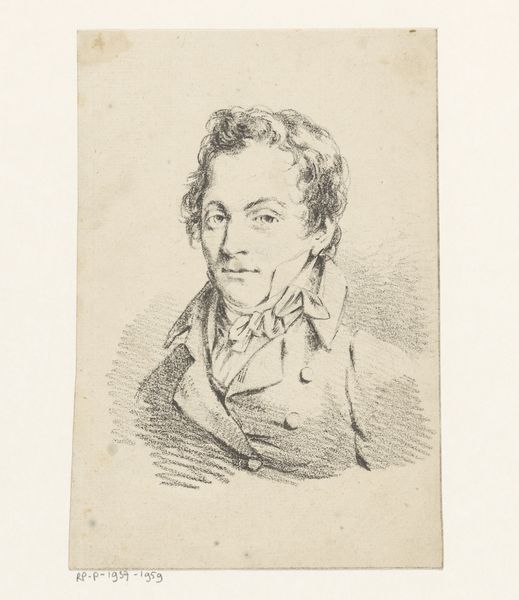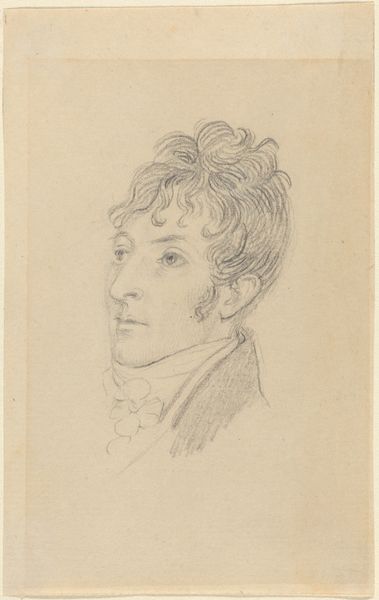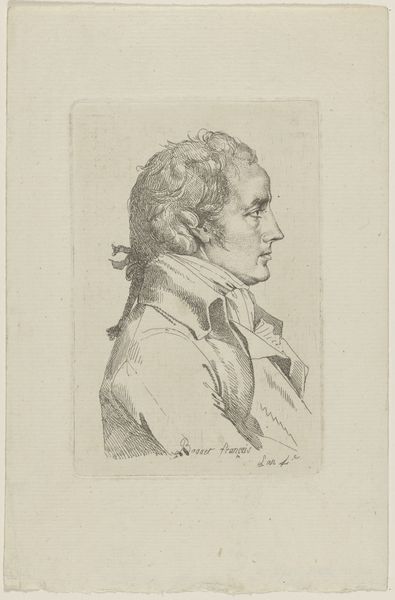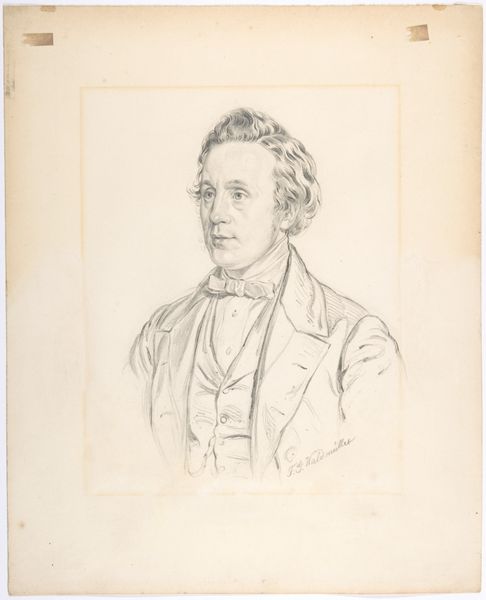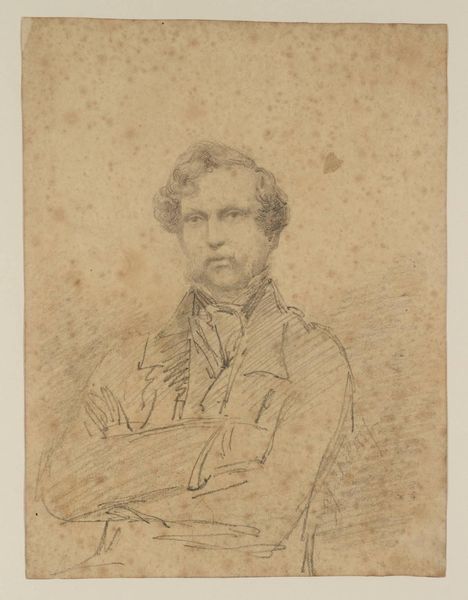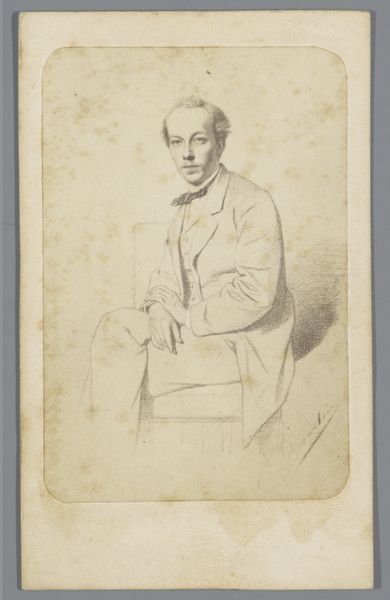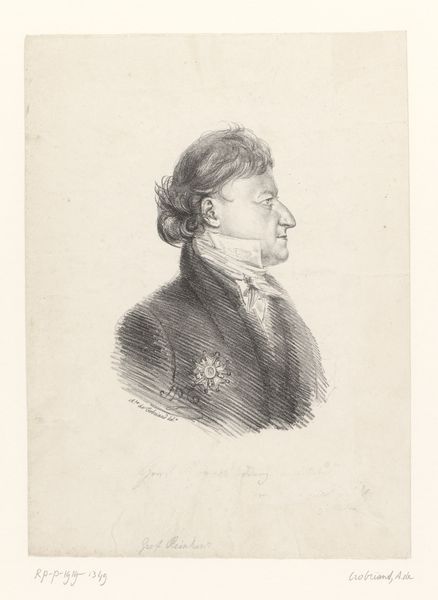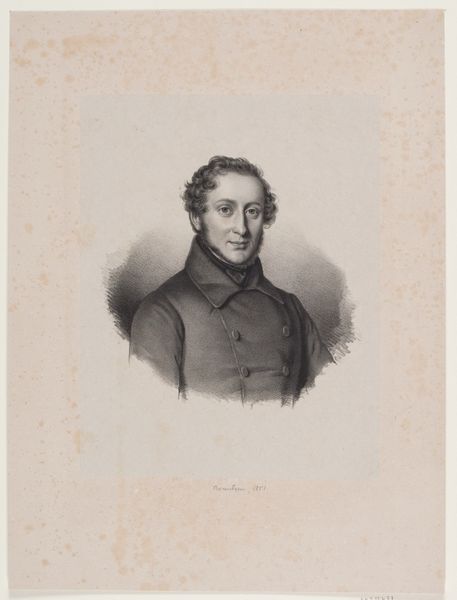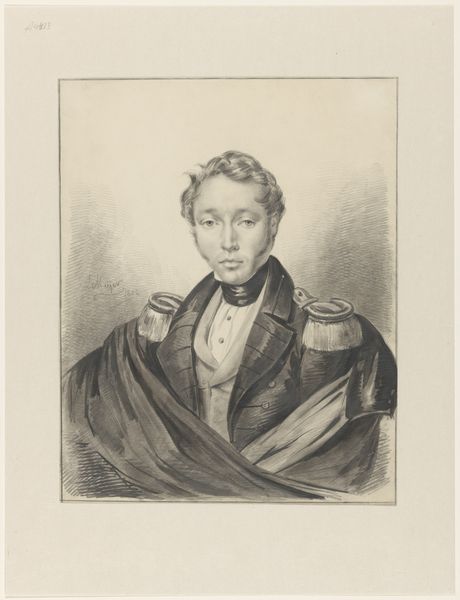
Dr. Moriard, Defender of Louis Napoleon During Reign of Louis Phillipe I n.d.
0:00
0:00
drawing, print, paper, graphite
#
portrait
#
drawing
# print
#
paper
#
graphite
#
history-painting
#
academic-art
#
realism
Dimensions: 300 × 232 mm
Copyright: Public Domain
Curator: Here we have "Dr. Moriard, Defender of Louis Napoleon During Reign of Louis Phillipe I," a work of unknown date from an anonymous creator. It’s a graphite drawing and print on paper. What's your initial impression? Editor: Spare, almost haunted. The figure's intensity is striking, but the sketchiness of the unfinished areas around him contributes a feeling of vulnerability. Curator: The power of this piece rests significantly in its context. This defense of Louis Napoleon situates the work in relation to significant political turbulence of the 19th century. We have to consider not only the history being depicted, but the historical circumstances under which it was made and received. It brings questions of power, identity, and the nature of heroism. Editor: Agreed. It's intriguing how the artist's process mirrors this sense of instability. We see graphite lines clearly mapping out the planes of his face and form, but there is also an element of speed to it – of wanting to capture this man for a specific political purpose. The drawing itself is doing some political work! You can almost feel the artist wrestling with the materials. Curator: Absolutely. Considering this portrait through a contemporary lens, we can examine the intersectionality of power and representation, exploring how visual art became intertwined with political ideology. Editor: Right, and examining the choice of materials—graphite on paper allowing for reproduction—shifts our attention to its accessibility. This image, while depicting a defender of power, also speaks to the potential for broader distribution and consumption among the masses. It points at social agency—paper, pencil, print. Curator: Ultimately, analyzing "Dr. Moriard" pushes us to confront uncomfortable truths about history and art’s role in perpetuating narratives of power. It challenges viewers to engage with questions of identity, ideology, and social justice. Editor: Indeed, and prompts a close consideration of artistic choices—like this economical but intense use of graphite—reveal how even seemingly simple portraits can carry heavy material and historical weight. Curator: The intersection between the subject of the piece and the way it was rendered offers avenues to examine historical discourse around identity, dissent and ultimately, collective consciousness. Editor: Thinking about the drawing reminds me that, beyond surface-level appearances, are layers of political tension, and even radicality that were part of its own time.
Comments
No comments
Be the first to comment and join the conversation on the ultimate creative platform.
